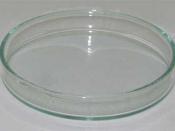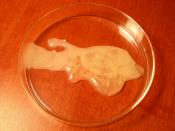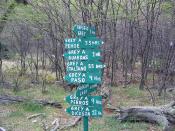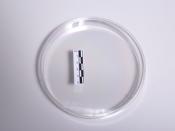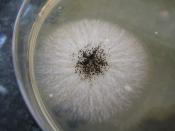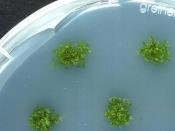Hypothesis (Null): There will be no effect upon different distance intensities of light on the terrestrial isopods.
IV: The different distance intensities of light at specified lengths (1 meter, 2 meter, and 3 meters) DV: The number of terrestrial isopods (rolypolies) on the unlighted side on the petri dish.
Control: The unlighted side of the opened up petri dish.
Purpose: To determine the light sensitivity of terrestrial isopods (rolypolies) in different levels of lighted environment.
Number of Trials: Three 30, 60, and 90 second trials for each specified level of light at 1, 2, and 3 meters distance.
Constants: The temperature of the room, petri dish, time trials for each trial of light distance testing, and the number of trials.
Materials: Clear petri dish, one projector with bulb pre-inserted and rolling cart, piece of aluminum foil.
Procedure: To start the project the first thing to do is locate and transfer about ten terrestrial isopods (rolypolies) on each side of a petri dish with five rolypolies on each side.
On the control side of the opened up petri dish, it will be unlighted due to a piece of aluminum foil wrapped around that area. On the other side of the opened up petri dish, it will lighted with varying distance intensity due to the movement of the projector to 1 meter, 2 meter, and 3 meter lengths. Each trial will last a total of 90 seconds long and will be duplicated three times at 3-30, 60, 90 second intervals for each varying distance intensity of light distance. After the trials, the data collected from the movements of the rolypolies which will indicate the effect of varying distance intensities of light on the test subjects or terrestrial isopods.
Data: On the x-axis, the time will be set in 10 second intervals for a total of nine intervals. The number of rolypolies on each side of the petri dish at any given time will be on the y-axis. There will be two separate colored (i.e. green and blue) lines for each varying distance intensity of light for a total of six different colored lines in all. Three lines for the control (unlighted side) and three other ones each with a varying distance intensity of 1 meter, 2 meters, and 3 meters. As a result the averages (sum of rolypolies of each 3-30, 60, 90 second interval divided by 3 trials) for each varying distance intensity of light and the control will be used and graphed to present a more formal, concise, and visualized statement.
Please see Attachment 1B and 2B for visual graph and trial data analysis results.
Conclusion: Based on the information gathered pertaining to the time trial averages for each distance intensity of light, there is evidence that the terrestrial isopods (rolypolies) prefer a certain middle range in the 1-3 meter area of different distance intensities of light. This is because the middle range (2 meters) as shown on the graph and data (trial test information) reflects and/or shows the least deviation in any of the 3-30, 60, 90 second trials for each varying distance intensity of light. This in mind, with logical reasoning one can determine that a person would prefer in a shower, warm water, as opposed to being exposed to water of extreme hotness or coldness. Another good example, would be a person standing in the hot sun wishing he/she had cool shade which was not too cold and better than standing out in the scorching sun at noontime. Finally, in addition to the above supporting information, there is reason to believe that the terrestrial isopod movements were caused by taxis because during the observation phase of the experiment, the rolypolies did not move around in a fashion that was random (kinesis). So, with the preponderance of the studied, averaged, and accumulated data, it is with the knowledge that even though this information may be flawed due to human error and other underlying factors and/or causes, one might conclude that it best represents the purpose of this lab due to the environment and conditions in which this project took place under.
